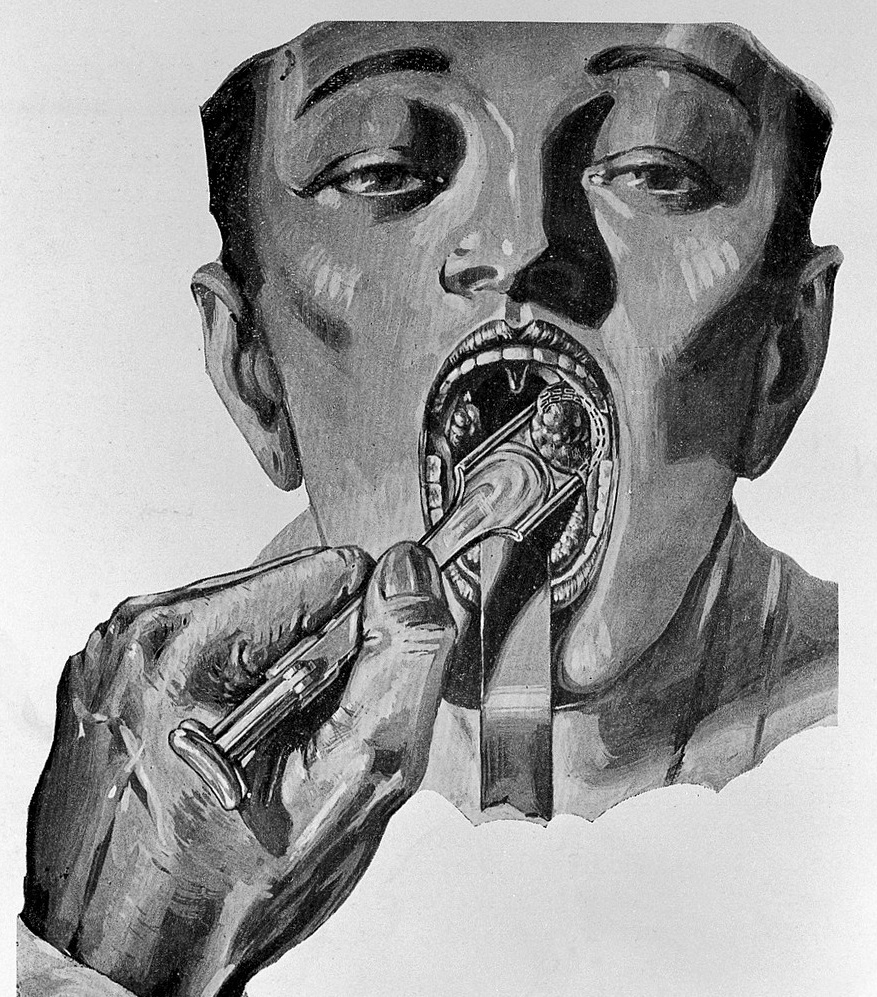Following both the First and Second World Wars, children came to be viewed as ‘citizens of the future’, and there was an increasing concern for their health, welfare and education. Following the formation of the NHS in 1948, many children were regularly seeing doctors for the first time, and this increased the rate at which minor health conditions like recurrent sore throats were being discovered during routine medical examinations at schools. Tonsillectomies were the standard treatment for recurrent throat infections, and the procedure became massively common for most of the remainder of the twentieth century.
Why was the Procedure so Popular?
Tonsillectomies became a popular procedure for a number of reasons. Firstly, it was considered quite safe and could be performed extremely quickly. Many surgeons boasted of how quickly they could perform the operation, leading to a flurry of professional bravado that helped to cement the procedure as a benchmark of surgical competence. Additionally, doctors at the time were often paid per procedure carried out, so there was also a financial incentive for surgeons to perform quick and easy operations such as tonsillectomies.

Secondly, the theory was that diseases could be caused by local infections in other areas of the body, known as ‘focal theory’, had become popular around 1900 and was quite widely accepted by the 1920s. Often, maladies were attributed to oral infections, either in the teeth or tonsils. It actually became common practice to remove teeth in order to prevent certain health conditions, even if the tooth itself was healthy. It was believed that diseases such as tuberculosis, which was the biggest cause of adolescent death at the turn of the century, was caused by infection in the tonsils. Many doctors were therefore of the opinion that all tonsils should be removed as a matter of course in order to protect children from future disease.
A Simple Surgery?
By the 1940s, thousands of children every year were undergoing routine tonsillectomies, often at the request of their parents. In 1948, the Ministry of Education reported that more than 98,000 procedures had been performed that year alone. Having one’s tonsils removed was considered to be a normal part of childhood, just like learning to ride a bike or going to school. However, there was some debate between pediatricians and throat surgeons as to how effective or necessary tonsillectomies really were. The surgery, though simple, was not without risk, and complications and infections following the procedure were often dismissed. It was not unheard of for children to die as a result of the surgery, but these were put down to ‘accidents’, and the question as to whether the operation should have taken pace at all was never addressed. Pediatricians also argued that the anxiety, pain, and discomfort that children experience both before and after the procedure far outweighed any minor benefits, if any, that the operation might have.
The Polio Pandemic
During the 1940s and 50s, doctors began to notice a link between tonsillectomy and the polio virus. It was increasingly found that children who had had their tonsils removed were more susceptible to the disease than those who had not. Though many surgeons argued against the claim, empirical evidence from the United States, who had experienced a very similar epidemic, was undeniable, and in 1955 the Ministry of Health officially reported that tonsillectomies caused a persistent risk of polio infection. This report meant that parents began to rethink the routine nature of the operation, and by the late 1960s, the procedure was drawing closer scrutiny and heavier criticism.
Archaic and Unnecessary
By the 1970s, antibiotics had rendered tonsillitis a minor ailment, akin to a cough or a heavy cold. The need for patients with recurrent sore throats to have their tonsils removed was therefore drastically reduced. There was also an increasing lack of evidence as to the procedure’s benefits, as study after study showed that tonsillectomies were not as effective as had once been thought. Further studies showed that many children also suffered long term anxiety and mental trauma from the procedure and subsequent hospitalisation. Through various parliamentary enquiries, it also became apparent that elitist surgeons were using the procedure to elevate their own standing and push for further funding for their own departments. As a result of these revelations, tonsillectomies became synonymous with medical overreaching, and the procedure quickly fell out of fashion.
Sources and Further Reading